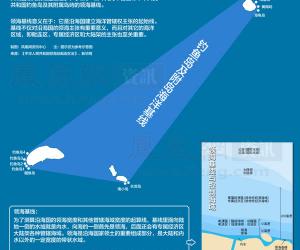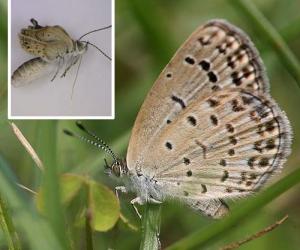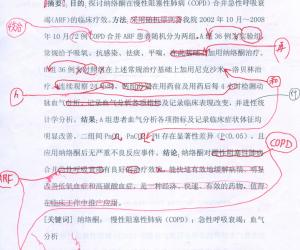中国科学家Science同期发表2篇研究论文
自从3月底中国首次报道人类H7N9禽流感病例以来,已有20%的感染人群死亡。生活在H7N9禽流感病毒的威胁下,人们对于禽流感人传人的担忧日益加重。来自中国的科学家们在最新一期(5月3日)的《科学》(Science)杂志上发表了两篇研究论文,探讨了如何才会发生禽流感感染人类这种情况。
生物通报道
来自中国的科学家们在最新一期(5月3日)的《科学》(Science)杂志上发表了两篇研究论文,探讨了如何才会发生禽流感感染人类这种情况。在第一项研究中,来自中国科学院的研究人员采用X-射线晶体学,在原子水平上显现了突变是如何改变H5N1禽流感病毒对人类呼吸系统细胞的结合力的。在第二项研究中,来自中国农业科学院的研究团队构建出了一种能够更轻易在哺乳动物之间传播的H5N1/H1N1杂合病毒(hybrid viruse)。
中科院结构病毒学家高福(George Gao)说:“新研究告诉了我们,在未来的监控工作中我们寻找何种突变。它可以帮助进行大流行预测。”生物通www.ebiotrade.com
在他们的论文中,高福和同事们检测了病毒与宿主之间联系。近期,来自荷兰的研究人员构建了一些突变的H5N1病毒,证实它们可通过呼吸微粒(respiratory particle)轻易地在雪貂之间传播。这些突变发生在编码血凝素(hemagglutinin,HA)的病毒基因上。
病毒通过血凝素蛋白与宿主呼吸系统细胞唾液酸受体结合。但对于这一过程背后的分子机制却并不清楚。因此高福和同事们构建出了野生型的H5 HA蛋白和突变H5 HA蛋白。随后他们让每种HA蛋白分别与鸟类唾液酸呼吸系统受体类似物,或人类唾液酸呼吸系统受体类似物相结合。生物通www.ebiotrade.com
利用X-射线晶体学,该研究小组对这一复合物进行了显像,发现HA Q226L位点突变引起了呼吸系统细胞受体的顺反(cis/trans)构象转换。这种转换改变了流感病毒与呼吸系统细胞的结合强度。野生型HA根本无法结合人类受体类似物,而Q226L突变的HA可以结合受体,还能在体内致病。
目前,该研究小组正在针对H7N9病毒展开研究工作,H7N9病毒的HA就存在一个天然的Q226L置换。这项工作或可帮助研究人员了解和平息中国的新流感疫情。生物通www.ebiotrade.com
在另一篇文章中,中国农业科学院的研究人员报道,两种不同的禽流感病毒株可以在家畜宿主内体融合形成更有效力的病毒。
论文的资深作者、中国农业科学院的陈化兰(Hualan Chen)说:“2009年H1N1病毒引起了全球大流行,现在与H5N1病毒共存于世界的许多地区。因此我们提出了这样一个问题:禽流感H5N1和高度传染性的2009 H1N1病毒之间是否可能发生一种H5N1重组,从而使其变得能够在哺乳动物之间传播,并有可能引起人类大流行?”生物通www.ebiotrade.com
利用反向遗传学(reverse genetics),陈化兰研究小组利用分离自鸭子的H5N1病毒株与H1N1病毒构建出了127种重组病毒。他们以小鼠代替人类,在其体内测试了这些病毒的致死性。并调查了这些病毒是否能够轻易地在豚鼠之间传播,豚鼠具有与哺乳动物和鸟类相似的呼吸道受体。
他们发现两种基因使得H5N1病毒能够通过空气在豚鼠之间传播:PA (polymerase acidic,酸性聚合酶蛋白)和NS(non-structural protein,非结构蛋白)。这些来自H1N1病毒的基因使得H5N1能够通过飞沫传播。此外,其他几种流感基因,尤其是核蛋白(NP)、神经氨酸酶(NA)和基质蛋白(M),也使得病毒能够更轻易地在哺乳动物之间传播。生物通www.ebiotrade.com
最后,陈化兰说,该研究论文表明了来自不同病毒的遗传物质可在家畜宿主体内融合,生成的病毒具备在哺乳动物,甚至可能是在人类之间传播的能力。
(生物通:何嫱)
生物通推荐原文摘要:生物通www.ebiotrade.com
An Airborne Transmissible Avian Influenza H5 Hemagglutinin Seen at the Atomic Level
Recent studies have identified several mutations in the hemagglutinin (HA) protein that allow the highly pathogenic avian H5N1 influenza A virus to transmit between mammals by airborne route. Here, we determined the complex structures of wild-type and mutant HAs derived from an Indonesia H5N1 virus bound to either avian or human receptor sialic acid analogs. A cis/trans conformational change in the glycosidic linkage of the receptor analog was observed, which explains how the H5N1 virus alters its receptor binding preference. Furthermore, the mutant HA possessed low affinities for both avian and human receptors. Our findings provide a structural and biophysical basis for the H5N1 adaptation to acquire human, but maintain avian, receptor binding properties.
H5N1 Hybrid Viruses Bearing 2009/H1N1 Virus Genes Transmit in Guinea Pigs by Respiratory Droplet
In the past, avian influenza viruses have crossed species’ barriers to trigger human pandemics by reassorting with mammal-infective viruses in intermediate livestock hosts. H5N1 viruses are able to infect pigs, and some of them have affinity for the mammalian type α-2,6-linked sialic acid airway receptor. By using reverse genetics, we systemically created 127 reassortant viruses between a duck isolate of H5N1, specifically retaining its hemagglutinin (HA) gene throughout, and a highly transmissible, human-infective H1N1 virus. We tested the virulence of the reassortants in mice as a correlate for virulence in humans, and tested transmissibility in guinea pigs, which have both avian and mammalian types of airway receptor. Transmission study showed that both polymerase PA gene and nonstructural protein NS gene of H1N1 virus made the H5N1 virus transmissible by respiratory droplet between guinea pigs, without death. Further experiments implicated other H1N1 genes in the enhancement of mammal-to-mammal transmission, including nucleoprotein (NP), neuraminidase (NA), and matrix (M), as well as mutations in H5 HA that improve affinity for human-like airway receptors. Hence, avian H5N1 subtype viruses do have the potential to acquire mammalian transmissibility by reassortment in current agricultural scenarios.











